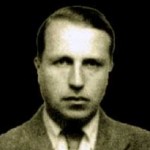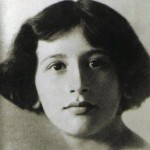LEAGUE OF EXTRAORDINARY HILOBROWS
By:
May 6, 2009

According to catalogue copy, Bond’s book asks a compelling question: “What if Jacques Lacan had worked as a police detective . . . applying his theories to solve crimes?”
Bond places Lacan at the crime scene and builds his argument through a series of archival crime scene photographs from the 1950s — the period when Lacan was developing his influential theories. Bond takes us inside the perimeter set by police tape and guides us into a series of explicit, even terrifying, murder scenes. It is not the horror of the ravished and mutilated corpses that draws his attention; instead, he interrogates seemingly minor details from the everyday, isolating and rephotographing what at first seems insignificant: a single high‐heeled shoe on a kitchen table; carefully folded clothes placed over a chair; a plate of chocolate biscuits on a dinner table; lewd graffiti inscribed on a train carriage door; an arrangement of workman’s tools in a forest clearing. From these mundane details he carefully builds a robust and comprehensive manual for Lacanian crime investigation that can stand beside the FBI’s standard-issue Crime Classification Manual.
A review copy of Bond’s book hasn’t arrived yet, but we’re already slavering at the prospect of a Lacanian police procedural. Possibilities abound — how about a Wittgensteinian game show (“do you choose case 13, or all that is the case?”), or a Sartrean reality show (“hell is other people — living together in a house in South Florida!”)? Better: Lacan joining forces with Georges Bataille, Simone Weil, and Leo Szilard (you need a tech guy) as a crime-fighting team, with, Žižek — wielding some technology that lets him bring them all back from the dead — as the avuncular-yet-shadowy Charlie-like figure pulling the strings?


